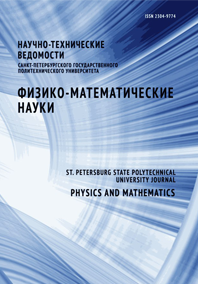Research of the photoelectric parameters of ZnO/Cu2O heterojunction solar cells
Theoretical modeling of ZnO/Cu2O heterojunction solar cells has been carried out to optimize its structure and increase the energy conversion efficiency. The effect of the thickness and defect concentration in Cu2O and ZnO layers on the efficiency of a solar cell is studied. It was found that the optimal thickness of the Cu2O and ZnO layers should be 5 µm and 20 nm, respectively. It is shown that to obtain a high efficiency of a solar cell, the defect concentration (copper vacancies) in the Cu2O layer should be 1015 cm−3, and the defect concentration (oxygen vacancies) in the ZnO layer should be 1019 cm−3. The maximum efficiency of a solar cell based on ZnO/Cu2O is 6 %. The experimental formation of Cu2O and ZnO layers by magnetron sputtering at room temperature has been carried out, their surface morphology has been studied, and experimental samples of oxide solar cells have been created.


